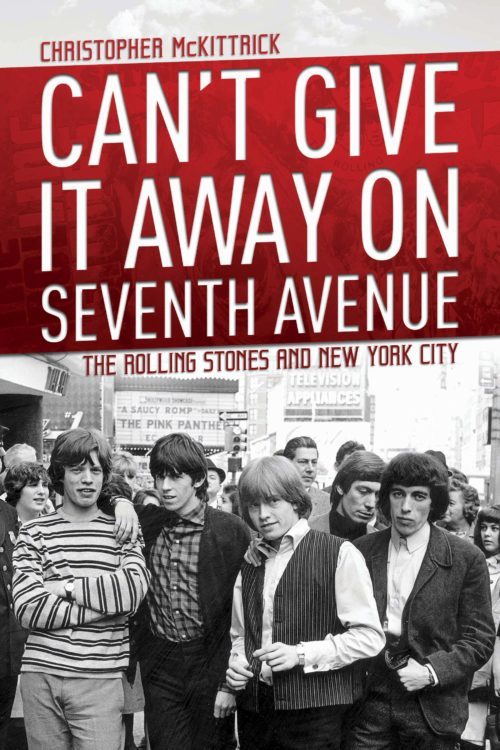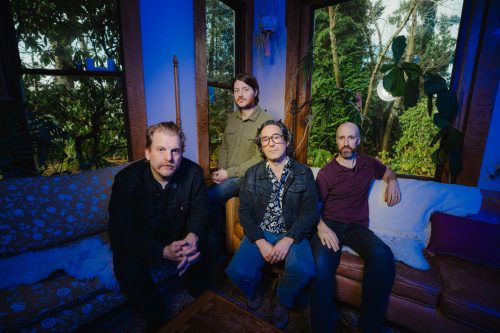In the relatively anything-goes era of 1990s alternative rock, there were bands with odd names and tough-to-pigeonhole sounds finding success — almost unthinkable in today’s mainstream musical landscape.
Among that pack was Huffamoose, a Philadelphia band formed in 1992, signed to major label Interscope in 1997. Riding high on the success of the single “Wait” (No. 34 on the Billboard Modern Rock charts) from the group’s sophomore album “We’ve Been Had Again,” the band was dropped by Interscope as quickly as it had been signed.
The group soldiered on with a smaller, less-equipped record label, then parted ways. Following a few reunion gigs in 2009, the band will reunite again on Sunday, Nov. 23 for a show at Ardmore Music Hall which will benefit Dan’s Voice, a memorial fund for the treatment and research of head and neck cancer. Also on the Philly-centric bill are Jim Boggia, Ben Arnold and The Fractals.
In advance of the show, we chatted with Huffamoose guitarist Kevin Hanson about the special benefit show and the history of the band — which also features singer Craig Elkins, bassist Jim Stager and drummer Erik Johnson.
H81R: How has the band been preparing for Sunday’s show?
KH: It’s funny, because we did a reunion a few years ago, and that point we hadn’t played together in seven or eight years, and we just put our axes on and it was like autopilot, and muscle memory took over and we played all the songs without thinking about it. This one will take a little more work because we want to be a little more adventurous and play a few songs that weren’t necessarily popular that we really enjoyed form the first day we were together.
H81R: The lineup for the show is decidedly Philadelphia flavored. How did this bill come together?
KH: Huffamoose did a lot of shows with Jim Boggia; in fact Eric Johnson and myself played in Jim Boggia’s band in 1998 and 1999, so we were friends for a long time. And I’ve played with Ben (Arnold) in various incarnations. I played on his last few records, and we’ve all been friends for a long time. We were part of this Manayunk music scene in the 1990s.
H81R: Are the band members still all based in Philadelphia?
KH: We’re all in Philly, besides the lead singer Craig Elkins, who lives in L.A. And Jim the bassist, Eric the drummer and myself, we’ve been playing together for so long. We started playing together as a group called the Kevin Hanson Trio about a year after Huffamoose disbanded, and we’ve been playing in The Fractals since 2005.
H81R: How would you compare the music of Huffamoose and The Fractals, who are also on Sunday’s bill?
KH: That’s a good question. There are some similarities in the grooves. The best description would be…gosh, that’s such an interesting question. My writing style is a little different from Craig’s. The sons are…how do I describe it? I was really influenced by Craig as a songwriter and I think we took off when we started recording in directions that were maybe a little different because we would try to play things that played on our influences of more r&b and the other extreme, some weirder, earlier David Bowie-type songs and ballads that exploited a lot more jazz harmonies. There are some similarities between the bands.
H81R: Do you sense that there is a resurgence in fan interest in bands that emerged in the ’90s?
KH: I’m definitely sensing it. There’s certainly a very strong pull of nostalgia for people in their 30s and 40s because it was their times. It’s like when I was growing up in the ’80s and my parents would hear a song from when they were growing up. I teach at the University of the Arts, so I’m around 18- to 20-year-olds every day, and I’m fascinated sometimes that there’s an awareness of bands from the ’90s and even the ’80s. A lot of these kids are into ’80s metal and they buy the same guitars. It’s great, I love it.
I think also there’s a turning away of a lot of pop music today, even though there are amazing bands coming out now, really creative bands, most of which most people will never hear because they’re never going to find a platform. I think the pop music today is so homogenized that if turn on the modern rock stations and even the hip-hop stations, it’s basically been reduced to a tempo and a 4-bar hook. There’s not a lot of original-sounding music anymore.
H81R: It seems that there was more diversity among the rock artists that got onto the radio and MTV in the ’90s than now.
KH: I think there was definitely a lot more diversity, and part of it was this term of “alternative rock,” because it was a term that came into the early ’90s that meant it was the new sound, the new rock ‘n’ roll, but it was such a wide umbrella. The Presidents of the United States of America, Rev. Horton Heat, Pearl Jam, Nirvana – they were all called alternative.
H81R: Who would you consider your peers back then?
KH: We opened for a few bands. We opened for Toad The Wet Sprocket. When went on stage, people looked at us like we were circus freaks because they were very polished and smooth – they were a very good touring band – and we were a little rough around the edges and didn’t have our look together. Several times we ran into The Apples In Stereo, but I don’t know that we’d be considered similar to them. We were compared to The Wallflowers because we were on Interscope and we were always fighting for attention because The Wallflowers were their big AAA (Adult Album Alternative) act. Not that we were similar to them. People would say, “You guys remind me of Soul Coughing.” We stuck out so much.




Leave a Reply